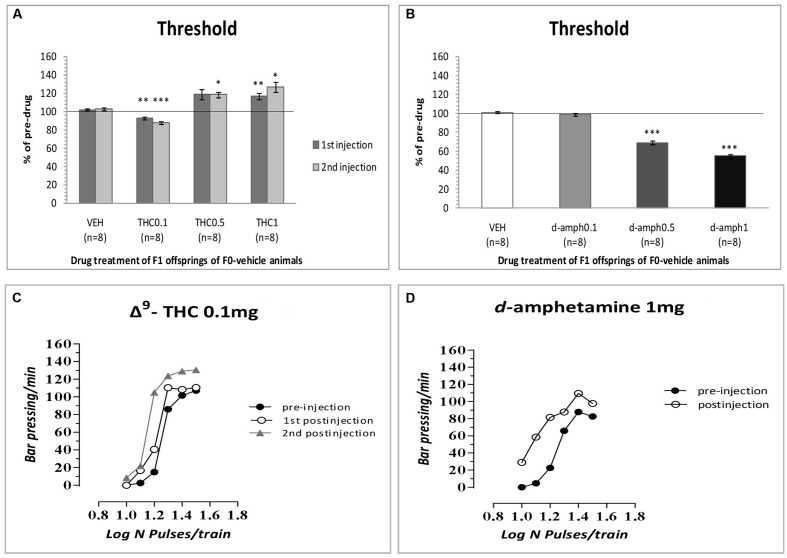FIGURE 1.
Changes in intracranial self-stimulation (ICSS) threshold expressed as percentage of predrug values, following Δ9-THC (0, 0.1, 0.5, and 1 mg/kg, i.p.) (A) and d-amphetamine (0, 0.1, 0.5, and 1 mg/kg, i.p.) (B) administration in F1 offspring of F0-vehicle animals. Vertical bars represent the means ± SEM. The asterisk (∗) signifies an ICSS threshold significantly different from the respective control group (vehicle), ∗p < 0.05, ∗∗p < 0.01, ∗∗∗p < 0.001. (C,D): Rate-frequency functions (rate of lever pressing as a function of stimulation frequency) taken from representative drug naïve animals (i.e., F1 of F0-VEH animals). Each plot represents data from a single animal under predrug and drug conditions (C: Δ9-THC0.1 mg/kg, D: d-amphetamine 1 mg/kg). Rate frequency functions were obtained by logarithmically decreasing the frequency of the stimulation pulses from a value that sustained maximal lever pressing to one that failed to sustain lever pressing. Both Δ9-THC and d-amphetamine caused parallel leftward shifts in the rate-frequency function.

